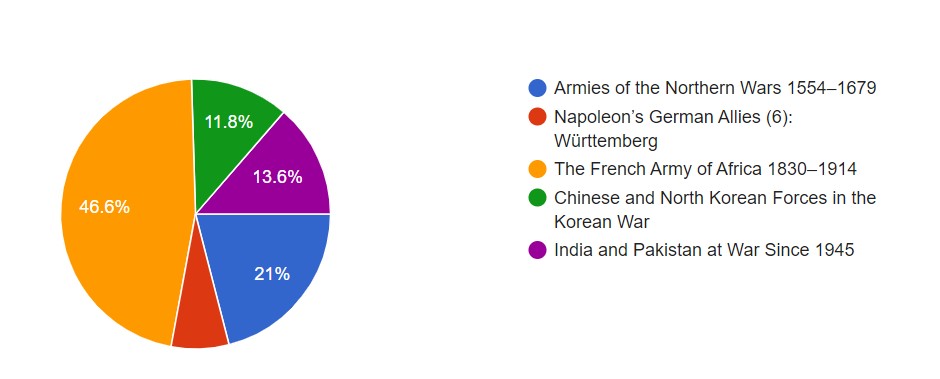This month's book vote sees five Duel titles battling for your vote. Read the full descriptions and have your say by clicking on the link below. Plus, check out the results of last month's Men-At-Arms book vote.
Soviet Anti-Tank Rifle vs Panzer: Eastern Front 1941–45
Ferdinand/Elefant Tank Destroyer vs Soviet Lend-Lease Armour: Kursk 1943
Marder III vs SU-85: Eastern Front 1943–45
T-70 Light Tank vs PzKpfw II Luchs: Eastern Front 1943–45
Panzerschreck vs Soviet Armour: Eastern Front 1943–45
Soviet Anti-Tank Rifle vs Panzer: Eastern Front 1941–45
Inspired by Polish and German anti-tank rifles, the single-shot PTRD-41 and the semi-automatic PTRS-41 were pitted against the latest German armour in the wake of Hitler’s invasion of the Soviet Union. Both types were widely used throughout World War II; even though they struggled to penetrate the Panzers’ frontal armour, they were formidable close-range ambush weapons, and the Germans and their allies were compelled to adopt more cautious armour tactics in urban settings.
Ferdinand/Elefant Tank Destroyer vs Soviet Lend-Lease Armour: Kursk 1943
Rushed into service for the mighty armoured clashes for the summer of 1943, the formidable Ferdinand tank destroyer – later redesignated the Elefant – could penetrate the armour of most Soviet armoured vehicles at long range. In the spawling battles around Kursk, the Elefant faced large numbers of British and US tanks supplied to the Soviet Union, notably the M4A2 medium tank, as long-range accuracy and firepower was pitted against tenacity, mobility and superior numbers.
Marder III vs SU-85: Eastern Front 1943–45
Faced with rapidly evolving armoured adversaries, both the German and Soviet forces on the Eastern Front were compelled to improvise. While the Germans mounted the latest anti-tank weaponry on the hulls of captured and obsolescent armoured vehicles, the Soviets adapted the 85mm anti-aircraft gun and placed it on the T-34 chassis. Both vehicles would be tested to the limits and beyond in the maelstrom of the Eastern Front, even as more advanced types made their debuts.
T-70 Light Tank vs PzKpfw II Luchs: Eastern Front 1943–45
Intended for reconnaissance and infantry support, the two-man T-70 light tank was the second-most produced Soviet tank of World War II after the T-34, while the four-man PzKpfw II Luchs was the final incarnation of the diminutive German light tank that had moved from battlefield mainstay in 1939 to near-obsolescence after 1941. Both types would see widespread combat on the Eastern Front, but prove to be the culmination of light-tank design in their respective armies.
Panzerschreck vs Soviet Armour: Eastern Front 1943–45
Inspired by the US bazooka, the German Panzerschreck (‘Tank Terror’) entered service in 1943. Alongside the one-shot Panzerfaust, the reloadable Panzerschreck gave the ordinary infantryman the chance to defeat enemy armour at close range. Like their US and British counterparts, Soviet tank crews facing this new threat were compelled to adopt field-expedient measures to counter it, while vehicle designers puzzled over how best to defeat the Panzerschreck’s projectile.
Last month, we asked what you would like to see published in our Men-At-Arms series. Thank you to everyone who voted and provided feedback. The results saw one book taking a clear lead. Check out the full results below to find out more!



Comments
You must be logged in to comment on this post. Click here to log in.
Submit your comment